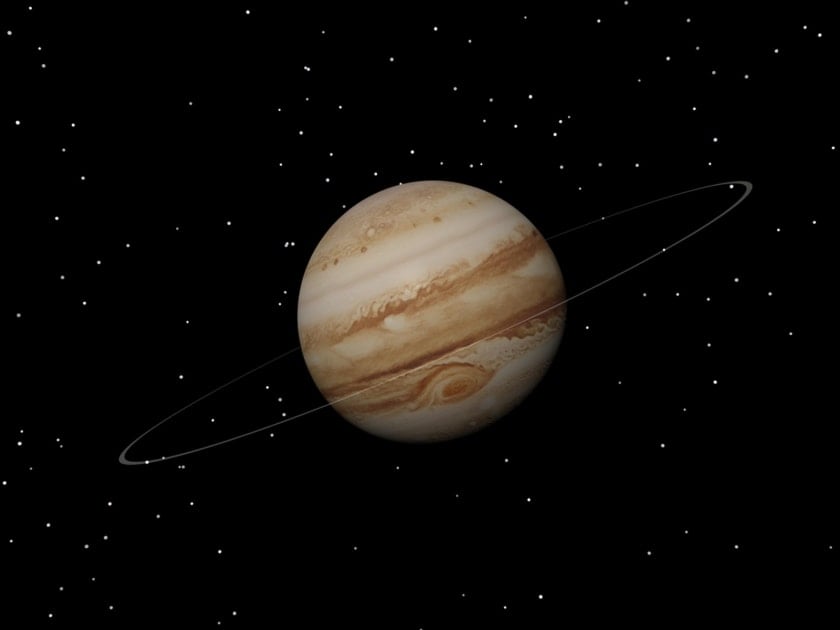Everything You Wanted to Know About Jupiter
We've got some fascinating facts about our solar system's largest planet.

Jupiter is usually the third brightest object in the night sky, after the Moon and Venus (only Mars, our next-door neighbor, is occasionally brighter), and summer is an especially good time to view this bright behemoth.
Facts about Jupiter, the “Gas Giant”
- Jupiter is the fifth planet from the Sun and the largest planet in our Solar System. It is more than 1,000 times larger than the Earth, with a diameter of more than 88,846 miles at its equator.
- It takes Jupiter 4,332 Earth days, or about 12 years, to orbit the Sun. However, it rotates much faster than Earth, completing a whole day in only 10 hours.
- Jupiter was named for the Roman god Jupiter, who is also the Greek god Zeus, king of the gods. He is also known as Jove. In Norse mythology, the planet is associated with the thunder god, Thor.
- The first recorded sighting of the planet occurred more than 4,000 years ago. It can be seen in the night sky with the naked eye, and is even occasionally visible in the daytime, when the sun is low.
- Jupiter has between 80 and 95 Moons. The four largest ones are called the “Galilean moons” because they were first discovered by astronomer Galileo Galilei in 1610. The largest, Ganymede, is bigger than the planet Mercury. The other three are Io, Europa, and Callisto. Read about Jupiter’s moons here!
- Jupiter’s “Great Red Spot,” is actually a colossal storm that has been raging on the planet’s surface since at least the 17th century, when it was first seen by telescope. It is only one of many such storms on the planet’s surface.
- Though rings are more commonly associated with Saturn, Jupiter actually has a faint ring system.
- The planet is called a “gas giant” because, though it looks solid, it is made up primarily of gases, such as hydrogen and helium. It probably also has a rocky core comprised of heavier elements. Saturn, Neptune, and Uranus are also considered gas giants.
- Jupiter is only 30% smaller than the smallest known star, but because the gases on its surface are not very dense, it would need 75 times more mass to become a star.
- The planet has a very intense radiation field that reaches out more than 185,000 miles from the planet’s surface. This field is strong enough to damage spacecraft that travel too close. In addition, Jupiter’s gases produce almost as much heat as the planet receives from the Sun.
Now that you have a little more knowledge about Jupiter, be sure to get outside on a clear night and look for it in the sky. No telescope required!
Join The Discussion
What do you think is the most interesting fact about Jupiter?
Have you spotted Jupiter in the night sky?
Share your experience and photos with your community here below!

Jaime McLeod
Jaime McLeod is a longtime journalist who has written for a wide variety of newspapers, magazines, and websites, including MTV.com. She enjoys the outdoors, growing and eating organic food, and is interested in all aspects of natural wellness.






I always enjoy your informative posts. Lately, on a few occasions, I have gone out in the late evening and viewed what I believe is Jupiter twinkling in the sky. I understand it has been the planet closest to the moon. Makes me wish I could purchase a decent telescope.
We’ve (me and my hubby) seen the Saturn on the 27th on top of the moon,it is actually a Pretty bright star up a sky (we observed it without the telescope,or binoculars),we live in Nigeria,thanks a bunch,last year we witness a complete (full) eclipse of the moon.Thanks farmer’s almanac keep it up. What’s next?
these are good facts about Jupiter because if you have a project you can you theses notes
God is so awesome
I live inMissouri. Could someone please tell me what that very bright star is that I can see towards the west? Or tell me just what it is please.
Hi Vickie,
Short of driving to Missouri and standing right next to you, there’s no way I can know for sure which star you mean. However, you’re probably looking at the planet Venus. After the Moon, Venus is usually the brightest body in the night sky, and it is sitting to the west right now.